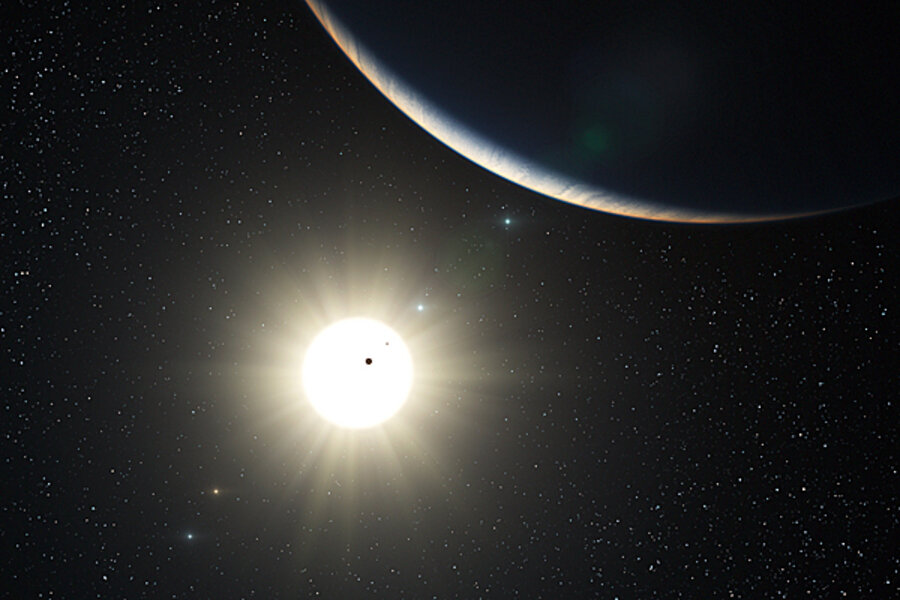Newfound star system could have seven planets
Loading...
Astronomers have discovered a new solar system that appears to have almost as many planets as our own. They found up to seven planets orbiting a star that is of a similar type to the Sun, including one that is likely to be rocky and less than 1.5 times the size of the Earth.
The star, labelled HD 10180, lies 127 light-years away from us in the constellation of Hydra, the water snake. Its collection of worlds was detected using a giant telescope operated by the European Southern Observatory at La Silla on a mountaintop in Chile.
A highly sensitive and world-beating “planet hunter” called HARPS was used to analyse light collected by the telescope’s 3.6-meter wide mirror, or “eye on the sky” over six years.
It found clear evidence for five giant planets similar in size to Uranus or Neptune in our own solar system. But there were also tantalising signs that two other planets are also present, one of which would be the smallest, or least-massive, yet found orbiting another star.
The positions of the planets in the new solar system also follow a similar pattern to that generally followed by our own Sun’s family of eight worlds, with each planet in order from the star being roughly twice as far as its sibling.
Using 190 measurements taken by the HARPS spectrograph, the team of astronomers followed tiny wobbles in the star’s position produced by the gravitational pull of its individual planets. The five strongest-pulling objects were diagnosed to be between 13 and 25 times the mass, or size, of Earth, and orbiting the star over timescales of six to 600 days.
The two other suspected planets include one about the size of Saturn which orbits in 2,200 days, or just over six years. The other would be the least massive planet ever found around another star, having a mass of only 1.4 times that of Earth.
There the resemblance must end because it appears to lie only a 50th as far from its parent star as Earth does from the Sun and it zips round it in a “year” lasting just 1.18 days. The five confirmed giant planets would all lie within the orbit of Mars in our own solar system.
Alien hunters will be encouraged by the growing evidence that planets are commonplace in the galaxy, providing more potential locations for life to have developed. Some have been found to be like planets in our own solar system. And scientists can even look for ET’s fingerprints in the planets’ atmospheres.
Reporting his team’s discovery in France today, astronomer Christophe Lovis said: “We have found what is most likely the system with the most planets yet discovered. This remarkable discovery also highlights the fact that we are now entering a new era in exoplanet research – the study of complex planetary systems and not just of individual planets.”
As well as HARPS, major planet discoveries are being made by Europe’s Corot space probe, a network of ground cameras called SuperWASP, and NASA’s Kepler space telescope.
• Discover space for yourself and do fun science with a telescope. Here is Skymania’s advice on how to choose a telescope. We also have a guide to the different types of telescope available. Check out our monthly sky guide too!
Paul Sutherland blogs at Skymania News





